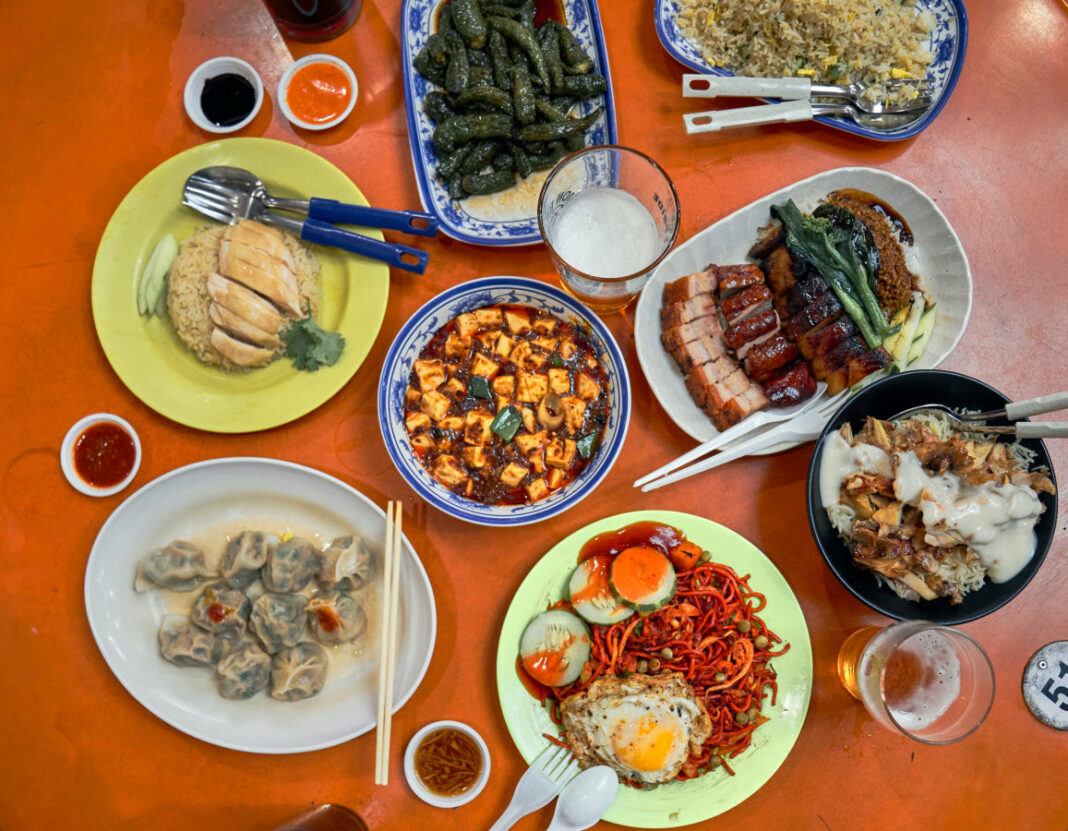Introduction: A Glimpse into Chinatown Hawker Culture
Singapore’s Chinatown hawker centres are bustling hubs of culinary delights, offering a myriad of affordable and delectable local dishes. However, a recent phenomenon has caught public attention: the consumption of leftover food by some patrons. This practice, observed primarily among elderly individuals, has sparked discussions about food waste, cultural values, and public health.
Understanding the Practice
Who Are the Leftover Consumers?
Reports have highlighted that several elderly men frequent hawker centres, particularly at People’s Park Centre, to consume unfinished meals left on tables or tray return areas. One such individual, Mr. Wang, an 84-year-old man, shared that he partakes in this practice not due to financial constraints but because he finds it wasteful to discard food that is still warm and edible .
The Motivation Behind the Action
The primary motivation for consuming leftovers appears to be a deep-seated cultural value of reducing food waste. In many Asian cultures, food is revered, and wasting it is considered disrespectful. For some, eating leftovers is a way to honor this value, ensuring that no food goes to waste.
Public Perception and Social Implications
Mixed Reactions from the Community
The sight of individuals consuming leftovers has elicited varied reactions from the public. Some view it as a commendable effort to combat food waste, while others perceive it as unhygienic or indicative of poverty. Such mixed perceptions highlight the complex interplay between cultural practices and modern societal norms.
The Role of Media in Shaping Opinions
Media coverage of this phenomenon has been a double-edged sword. While it brings attention to the issue of food waste, it also risks stigmatizing those involved. As noted by some commentators, the portrayal of these individuals can sometimes lack empathy, focusing more on sensationalism than understanding the underlying cultural motivations .
Health and Hygiene Considerations
Potential Risks Involved
Consuming food that has been left unattended poses certain health risks. The food may have been exposed to contaminants or pests, and the duration for which it has been sitting out can affect its safety. Health experts advise caution, emphasizing the importance of food hygiene and the potential dangers of consuming food from public spaces .
Balancing Tradition with Safety
While the cultural intent behind consuming leftovers is rooted in respect for food, it’s crucial to balance tradition with modern health standards. Encouraging practices that minimize food waste, such as donating excess food directly to those in need, can uphold cultural values while ensuring public health safety.
Addressing the Issue: A Path Forward
Promoting Awareness and Education
Educating the public about the cultural significance of food and the importance of reducing waste can foster a more understanding environment. Awareness campaigns can highlight the value of sharing excess food and the benefits of mindful consumption.
Implementing Practical Solutions
Hawker centres and food establishments can consider implementing systems that allow patrons to donate their unfinished meals safely. Designated areas for food donations, clear guidelines on food safety, and collaboration with community organizations can facilitate this process.
Conclusion: Navigating Cultural Practices and Modern Standards
The practice of consuming leftovers at Chinatown hawker centres underscores a deep cultural respect for food and a desire to minimize waste. While it reflects admirable values, it’s essential to address the associated health concerns and societal perceptions. By fostering understanding, promoting safe practices, and encouraging responsible food sharing, Singapore can navigate the delicate balance between tradition and modern public health standards.
FAQs
Q1: Is it common for elderly individuals to consume leftovers at hawker centres?
A1: Yes, reports indicate that several elderly individuals engage in this practice, primarily driven by a desire to reduce food waste rather than financial necessity.
Q2: Are there health risks associated with consuming leftover food in public spaces?
A2: Yes, consuming food that has been left unattended can pose health risks due to potential contamination. It’s important to exercise caution and adhere to food safety guidelines.
Q3: How can hawker centres address the issue of food waste?
A3: Implementing systems for food donations, educating patrons about food waste, and collaborating with community organizations can help address this issue effectively.
Q4: What role does media play in shaping public perceptions of this practice?
A4: Media coverage can influence public perceptions by highlighting cultural practices and their implications. It’s essential for media to approach such topics with sensitivity and understanding.
Q5: How can individuals contribute to reducing food waste in hawker centres?
A5: Individuals can contribute by being mindful of their food portions, donating excess food safely, and supporting initiatives aimed at reducing food waste in their communities.



